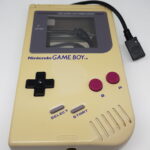In this post i’m going to make a quick comparison of 2 mini routers i’ve tested recently: the GL.iNet GL-AR300M16-Ext and the NanoPi R1.
These are easily available under the 50EUR price range, and make a good alternative to an old dumb LAN switch for home use.
The basic feature set of these routers include:
- Ethernet and Wifi bridging
- Wifi extender
- Wifi hotspot
- run self-hosted services (like file servers, IP cameras, DNS, etc.)
- USB-powered and very small, easy to carry around
The GL-AR300M16-Ext was probably the easiest to use, since it came with a custom-made firmware pre-installed made by GL.iNet. This simplified firmware gives easy access to most basic features and it is the best choice for inexperienced users. But it is also possible to install the full OpenWrt LuCI web interface and get access to a lot more. However, after some days of use some problems started to roll out:
- very limited storage space (16MB. yes, MBs!) and no extra storage option. Read: you can only install very few packages.
- the filesystem became corrupted and read only, forcing to do a softreset (possibly related to the lack of free space).
Now, GL.iNet also offer some models with bigger storage, but still in the order MBs and with no option for firmware loading from external storage.
Switching to the NanoPi R1 things went much better: the model i’ve bought has no onboad storage, but you can plug and swap any microSD you want (which also makes full backups easier). On the R1 you have no simplified firmware, but only the OpenWrt vanilla one, so probably it is not the best choice for novice users. However there are also Ubuntu and Debian images available for this board. The ones on the Friendlyelec wiki are outdated, so i’ve switched to this one which is updated regularly and has some interesting optimizations: DietPi.
To sum things up, for a quick recap:
GL-AR300M16-Ext
- pros: easier to use, handy firmware reset button, good manufacturer support, 2 builtin wifi NICs (for bridging)
- cons: very small builtin storage with no expansion option
NanoPi R1
- pros: unlimited storage option via swappable microSDs, mine came with a metallic case which seems to dissipate heat pretty well.
- cons: harder to setup, official images are outdated, mostly no manufacturer support, only 1 builtin wifi NIC (a second one can be added via an USB port)
Another option i’ve considered are those routers by TP-Link: TL-WR802N Nano Router N300 and TL-WR902AC Nano Router AC750. These also seems aimed at novice home users since they came with a custom-made simplified firmware. However these seems even more limited than the GL.iNet router, with no external storage and no USB ports.
